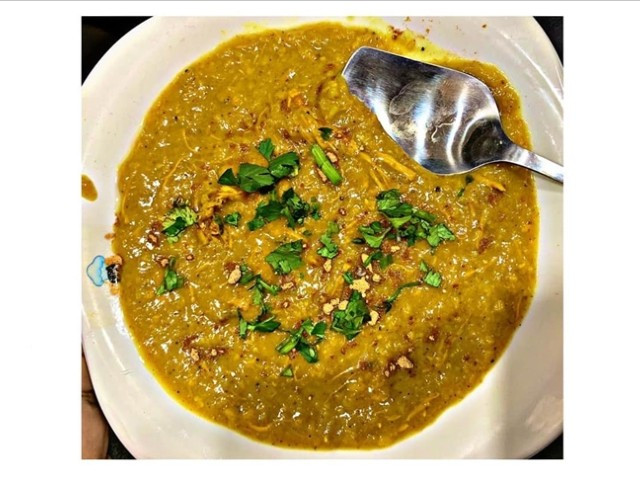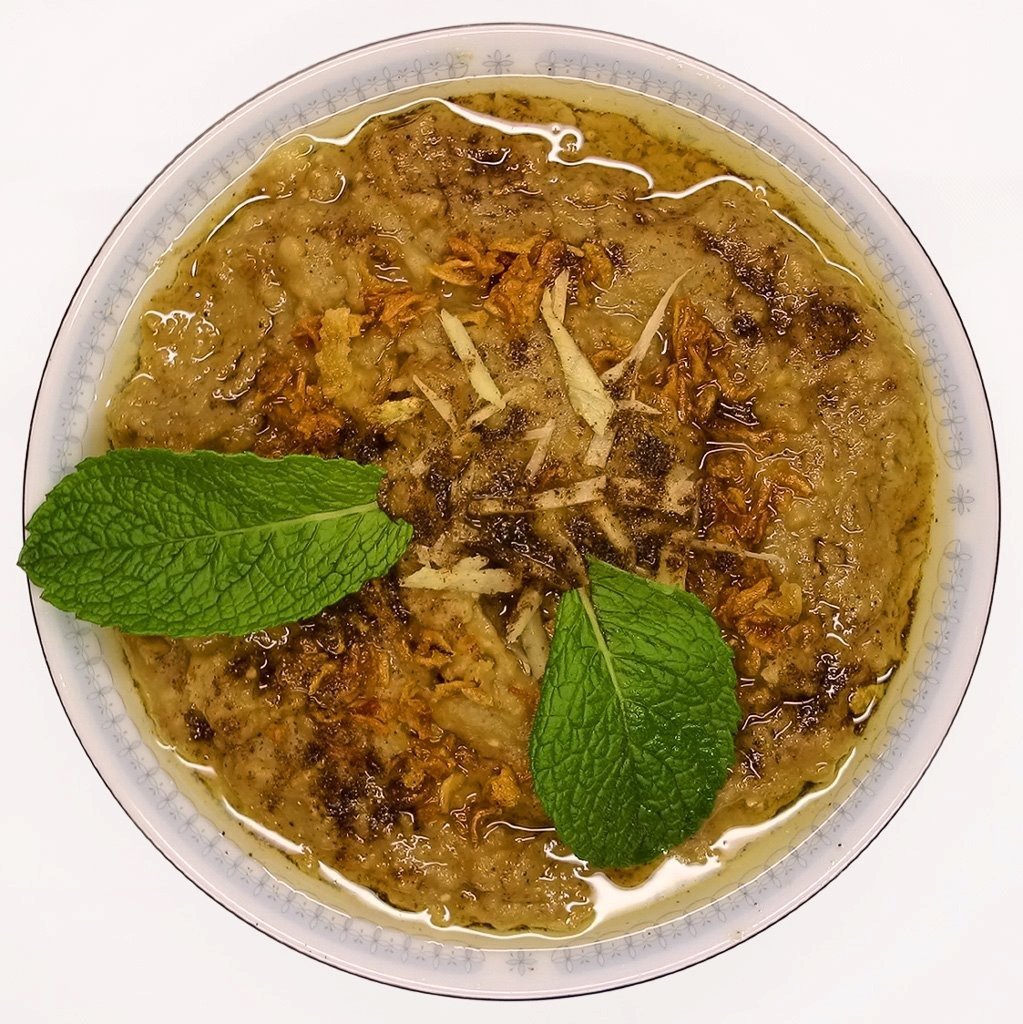
Haleem, a popular meat and wheat dish originally prepared in the city of Hyderabad, the capital of southern India's Telangana state, is the first cooked product having received Geographical Indication (GI) status in the country.
A melting pot of Turkic, Arabic, and local Indian traditions, Hyderabad’s unique dish now regarded as an international delicacy and prepared by skilled chefs at a low temperature close to 12 hours is a perfect recipe to recall the Sustainable Gastronomy Day, which is being observed on Friday.
Comprising a mix of pounded multigrain, lentils, goat or chicken meat, clarified butter, dried fruit, and saffron, the dish was accorded the GI certification in 2010 by the Indian GI Registry, meaning that it cannot be sold in parts of the world using the Hyderabad tag unless it meets criteria.

Originally an Arabic dish, introduced to Hyderabad by the Arab diaspora during the reign of Mahbub Ali Khan, who ruled the region from 1869-1911, it soon became part of traditional cuisine.
Khan known as Nizam of Hyderabad was a descendent of a Turkic family from Samarkand city of Central Asia, who migrated to India during the Mughal period in 1650.
Read more: Haleem recipe: The ingredient to refreshing old memories
Over recently it owes popularity to Mohammad Abdul Majeed, president of Hyderabad Haleem Makers Association and owner of Pista House Hotel.
Speaking to Anadolu Agency, Majeed said while the dish existed in the region earlier as well, they have changed its recipe to make it tastier.
“Slowly, it evolved into a taste of Hyderabad, distinct from the Arabian recipe, and became a great hit with the foodies of the city,” he said.
Although cooked especially during the Muslim holy month of Ramazan at a mass scale, it is now available at selected joints in the city throughout the year.
“The month of Ramadan is all about purifying your soul through fasting and Haleem gives the nourishment to the body during fasts as it is a high-calorie dish that gives instant energy, is rich in protein, and easy to digest, besides being appetizing and full of flavour,” said Majeed.
Turkic-Arabic background
Because of the Turkic-Arabic background blended with local Indian culture, the city of Hyderabad serves many mouthwatering dishes, out of which Hyderabadi Haleem draws admirers from far-off countries.
The mouthwatering dish also plays a crucial role in the city’s economy.

According to Majeed, there are 6,000 Haleem makers in the city and they, directly and indirectly, employ thousands more. The dish also sustains the national economy as the spices, lentils and some other ingredients are procured from various parts of India. He said while the wheat is procured from the northern state of Punjab, the sheep and goats come from nearby districts.
He said due to Covid-19 related restrictions the business was severely affected the last two years. During this year's Ramazan, the business picked up to 25%.
Also read: A TASTE OF DELHI, KARACHI-STYLE
Former director of National Research Centre on Meat, Hyderabad, V.V. Kulkarni said his institution has worked to increase the shelf life of the dish.
“We have conducted a study and completed a project so that it can be kept for three months,” he said.
According to the city's residents, Hyderabad's Haleem has unique qualities and the cooks here have achieved expertise and perfection over some time.
“The Hyderabadi Haleem is different from other places. It is unique. Hyderabad's Ramazan is incomplete without Haleem," said Javed Alam, a resident of Hyderabad.
The delicacy is also exported from India to countries like the US, Europe, and West Asia. The taste, aroma, and feel of the dish are matchless and gives the city of Hyderabad a separate identity across the world.



1730959638-0/trump-(19)1730959638-0-165x106.webp)
















COMMENTS
Comments are moderated and generally will be posted if they are on-topic and not abusive.
For more information, please see our Comments FAQ